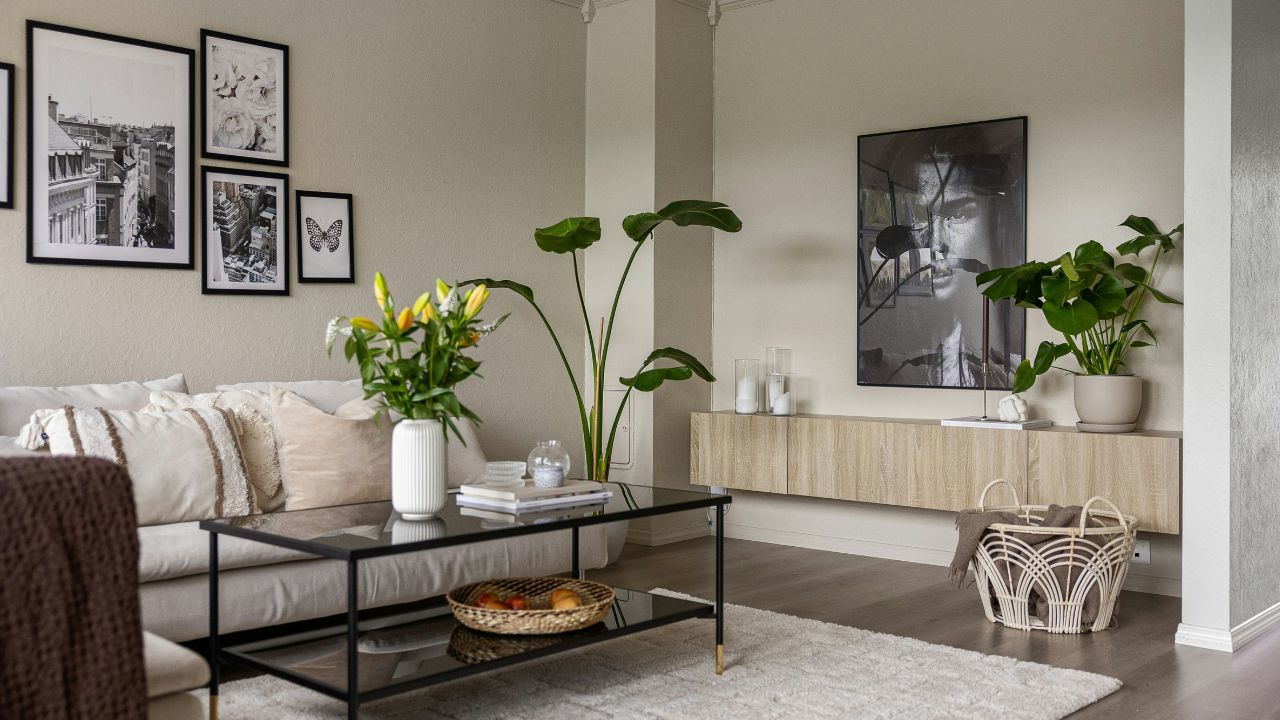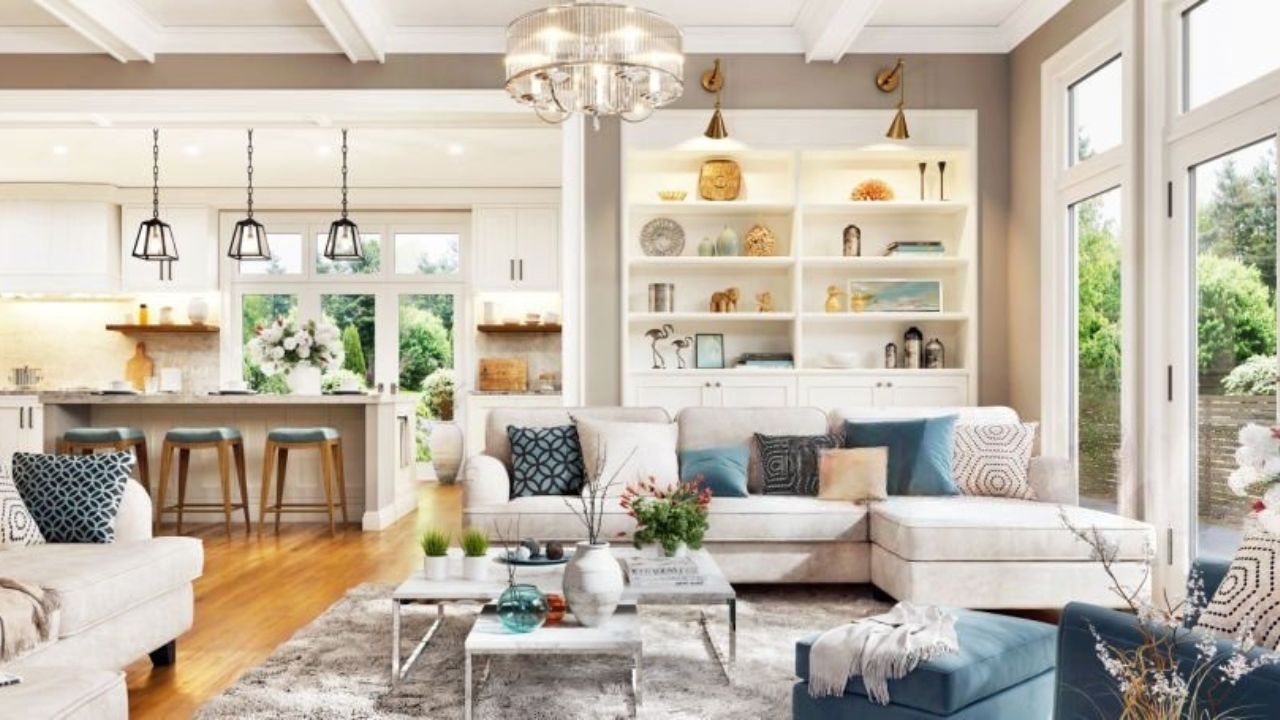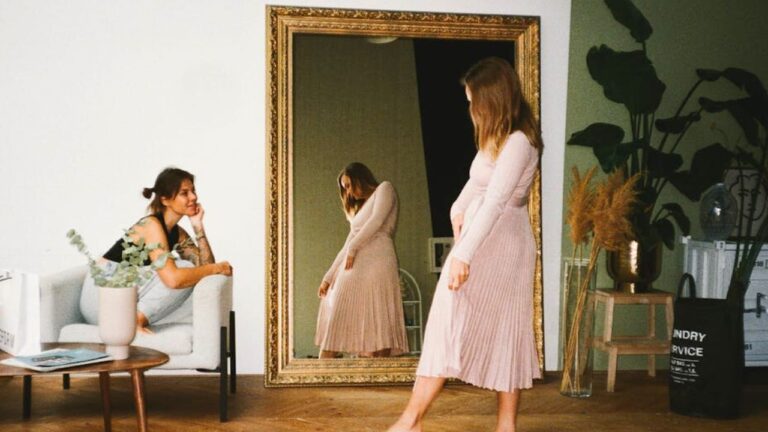What million-dollar homes don’t get wrong (and you can copy)
A lot of “expensive” design talk gets stuck on materials and brand names. What high-end homes consistently nail isn’t labels—it’s alignment. Rooms feel connected, traffic flows, and the details don’t fight each other. The good news: those wins aren’t locked behind a huge budget. They’re habits. You can copy them with planning and a few targeted swaps.
The goal here is steadiness. Keep the message consistent from the porch to the pantry. If your house looks put together in the entry but the hallway lighting is harsh or the doors don’t match, the spell breaks. These are the things million-dollar homes handle quietly and well—and how you can do the same.
A limited palette that repeats on purpose
High-end spaces pick a small family of colors and finishes, then repeat them. That doesn’t mean every wall is the same. It means trim, doors, hardware, and textiles reference each other. Start with one neutral wall tone for most spaces, one trim/door color, and one or two metals you’ll reuse (for example: warm brass and black). If you love wood tones, limit yourself to two in shared sightlines. Repetition creates calm without feeling flat.
Action step: Walk a straight line from your front door to the main living area. List every color and finish you pass. Edit anything that breaks the pattern or repaint it to match.
Lighting that layers, not blinds
Nothing drags a house down like a single overhead light. Luxury homes layer ambient, task, and accent light. They also use matching color temperature so the house reads as one space, not a patchwork. Put dimmers on dining and living fixtures, add at least one lamp in every sitting zone, and install under-cabinet lights in the kitchen so counters are bright without glare.
Action step: Replace mixed bulbs with one color temperature throughout (2700–3000K for warm residential). Add a plug-in sconce or lamp to any dark corner guests hesitate to sit in.
Hardware choices that feel deliberate
Million-dollar homes don’t switch from chrome to brushed nickel to black at random. They pick a small set of metals and apply them consistently. If a full-home swap isn’t realistic, change the most visible areas first: entry, powder room, kitchen pulls, and primary bath. Match hinges and door levers where you can; touch up scuffed door edges and strike plates.
Action step: Create a “finish map” by room. Choose one dominant metal and one supporting metal. Keep them consistent on door levers, cabinet pulls, and main lighting.
The floor plan breathes

Upscale houses respect negative space. Sofas aren’t shoved into every wall gap. Circulation is clear. If your living room feels tight, the fix might be editing pieces, not buying more. Use fewer, larger items rather than many small ones. Choose a rug that fits the seating footprint (front legs of all seats on the rug), and keep a minimum of 30–36 inches for walkways.
Action step: Remove one piece of furniture from the most cramped room and slide remaining pieces for better conversation angles. Reassess before buying anything new.
Window treatments that fit
Short curtains or thin rods signal “temporary.” Hang rods high (about halfway between the window trim and ceiling or a few inches below crown), extend them wider than the window, and use panels that just kiss the floor. If your style leans clean, choose tailored panels or lined roman shades. Color can be neutral; the upgrade comes from length, weight, and fit.
Action step: If replacing everything isn’t in budget, fix heights first. Rehang panels higher and wider to make windows feel intentional and generous.
Doors and trim that match the story
Luxury homes treat interior doors like part of the architecture, not an afterthought. Matching profiles, consistent paint sheen, and fresh caulk on trim go a long way. If your doors are a mixed bunch, pick the most visible hallway and standardize that zone first. Paint doors and trim in a satin or semi-gloss for light bounce and easy cleaning.
Action step: Patch nail holes, caulk gaps at trim, and repaint baseboards in the main living areas. Crisp edges read high-end even with budget floors.
Pantry, closets, and the “open something” test
When every hidden space looks considered, the whole house feels upgraded. Million-dollar homes pass the “open something” test: open the pantry, linen closet, or utility cabinet—no chaos. You can get 80% there with clear bins, labels, and a rule that every category has a home.
Action step: Tackle one behind-the-door space per week. Group, label, and set a reset routine. Guests might never see it, but the way your home functions will show.
Maintenance is part of the aesthetic
The best finishes look cared for. That’s not a spend; it’s a schedule. Replace cracked outlet covers, remove paint from hinges, wipe baseboard dust, and keep thresholds aligned. A well-maintained builder faucet looks better than a grimy designer one.
Action step: Make a quarterly “polish list”: outlets, switch plates, door stops, thresholds, vents, and caulk. Knock it out in one afternoon.
Art and mirrors sized correctly

Small art above big furniture makes a room feel cheap. Choose fewer, larger pieces hung at eye level. In entries and over consoles, mirrors should be at least two-thirds the width of the furniture below. Use frames that repeat your hardware or wood tone for cohesion.
Action step: Gather small frames into one gallery on a secondary wall and invest in one larger piece for your main wall. The room will feel grounded immediately.
Like Fix It Homestead’s content? Be sure to follow us.
- I made Joanna Gaines’s Friendsgiving casserole and here is what I would keep
- Pump Shotguns That Jam the Moment You Actually Need Them
- The First 5 Things Guests Notice About Your Living Room at Christmas
- What Caliber Works Best for Groundhogs, Armadillos, and Other Digging Pests?
- Rifles worth keeping by the back door on any rural property
*This article was developed with AI-powered tools and has been carefully reviewed by our editors.







